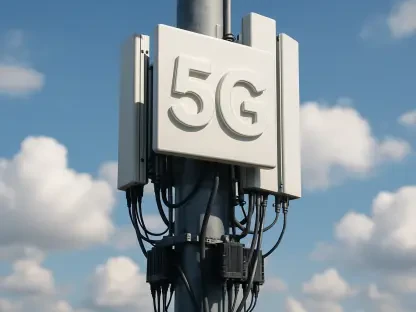Matilda Bailey has long been recognized as a leading voice in the field of networking, especially when it comes to integrating the latest technologies like cellular and wireless solutions into enterprise operations. In an era where the Internet of Things (IoT) is expanding rapidly, understanding its integration into enterprise networks is crucial. Today, Matilda sheds light on the complexities and considerations that come with IoT integration, offering insights into both challenges and opportunities.
Can you provide an overview of the current state of IoT integration in enterprise networks?
The landscape is evolving quickly, with IoT becoming a critical part of enterprise networks. Companies are grappling with the sheer number of devices and the data they generate. Integration is about more than just connecting devices; it’s about ensuring seamless data flow and interoperability across diverse systems while maintaining robust security protocols.
What are the main reasons organizations are investing in IoT technology?
Organizations see IoT as a way to enhance efficiency and drive innovation. For instance, in retail, IoT enables secure and efficient payment systems. In healthcare, it supports patient monitoring and telehealth. Cities leverage IoT for traffic management. Each of these examples demonstrates how IoT can help optimize operations and provide better service to customers and citizens alike.
How do IoT networks connect various devices, and what are some examples of IoT components?
IoT networks connect devices like sensors, cameras, and drones to central hubs where data can be processed in real time. This connectivity is crucial for applications ranging from smart cities to automated manufacturing. The key is the ability to gather and relay data without obstruction, which requires a well-integrated network framework.
Could you explain the challenges of uniform interoperability and security in IoT integration?
Interoperability and security are significant hurdles. Interoperability involves ensuring different devices and systems can work together seamlessly, which is complicated by varying standards and protocols. Security is another major concern, as each device can potentially serve as an entry point for attacks. Addressing these challenges requires rigorous planning and standardization.
What factors should administrators consider when deciding whether to place IoT devices across a single network or segment the network for specific applications?
It’s crucial to consider the type of application and its specific needs. For instance, high-bandwidth applications may require dedicated network segments to prevent congestion and ensure optimal performance. On the other hand, some environments benefit from a single network to streamline management and reduce complexity. It often comes down to balancing performance requirements with operational flexibility.
How do different IoT business use cases affect connectivity choices?
The use case dictates the connectivity solution. For instance, localized applications might rely on Bluetooth or Wi-Fi, which are ideal for short-range communication. Meanwhile, broader applications might require cellular networks for their extensive coverage. Each choice impacts the network’s ability to serve its intended function effectively.
Can you describe the benefits and drawbacks of highly localized IoT solutions like Bluetooth and Wi-Fi?
These technologies are cost-effective and efficient for limited-distance connections. They’re easy to implement and ideal for applications such as tracking within a hospital. However, they come with limitations, like range and data throughput, which could be insufficient for larger-scale applications.
What are the advantages of using cellular networks for broader IoT coverage?
Cellular networks provide extensive coverage and superior scalability. They are equipped to handle high volumes of data, suitable for large-scale deployments. Moreover, their inherent security features and reliability make them a robust option for enterprises needing widespread connectivity.
What role does low-power WAN technology play in long-distance IoT applications?
Low-power WANs, such as LoRaWAN and NB-IoT, are vital for applications that require long-distance coverage but have low data needs. They are perfect for scenarios like asset tracking across large geographical areas, providing connectivity without the high costs typically associated with cellular networks.
How important is early planning for IoT network integration, and what are the key considerations in this planning?
Early planning is crucial as it allows organizations to map out their connectivity needs, select appropriate devices, and lay down a security framework. It also provides room for scalability and adaptation to future needs, ensuring the network remains robust over time.
What challenges do organizations face concerning IoT interoperability and security protocols?
Organizations often encounter inconsistencies in device standards, which complicates interoperability. Security is also challenged by diverse devices and protocols that necessitate comprehensive and often bespoke security measures to mitigate threats effectively.
How should companies approach pre-purchase evaluations of IoT technology to avoid interoperability issues?
Before purchasing, thorough evaluations should be conducted, involving compatibility checks and consultations with stakeholders. This approach ensures the technology aligns with both current systems and future expansion plans, reducing the risk of costly interoperability issues.
Can you discuss the importance of QoS in IoT network integration, and what steps are involved in achieving high QoS?
QoS is critical for ensuring that IoT services function efficiently. Achieving high QoS involves analyzing data pathways, aligning network resources with business priorities, and fine-tuning network components to handle specific data loads effectively. This ensures that vital services receive the bandwidth they need.
How can IT staff determine which business areas receive maximum QoS and which do not?
This is all about understanding business priorities. By collaborating with different departments, IT can align network resources to areas critical for business success, like patient care in healthcare, while optimizing or scaling down in areas with less demand.
What potential political problems might arise with QoS decisions, and how can they be managed?
QoS decisions can lead to departmental conflicts, especially if resources are perceived to be unequally distributed. It’s essential to maintain transparent communication and establish clear criteria for resource allocation tied to business objectives to mitigate these tensions.
Why is it important for organizations to treat IoT integration as a strategic initiative rather than a tactical project?
Treating IoT integration strategically ensures long-term alignment with business goals and prepares the organization for future technological advancements. It promotes the development of comprehensive governance frameworks, leading to sustainable and scalable solutions.









